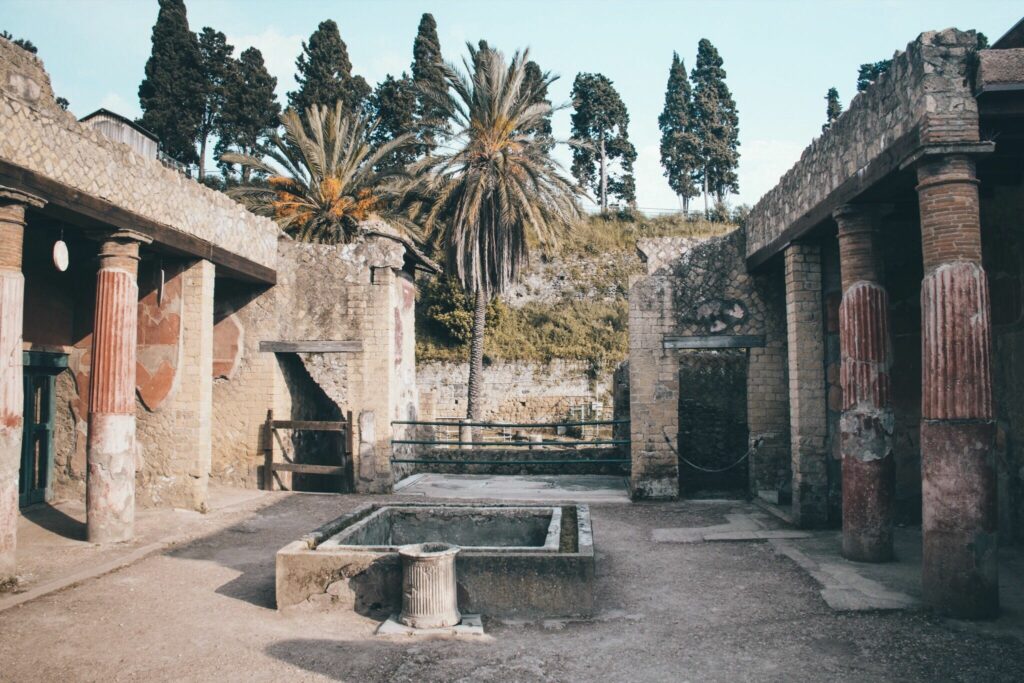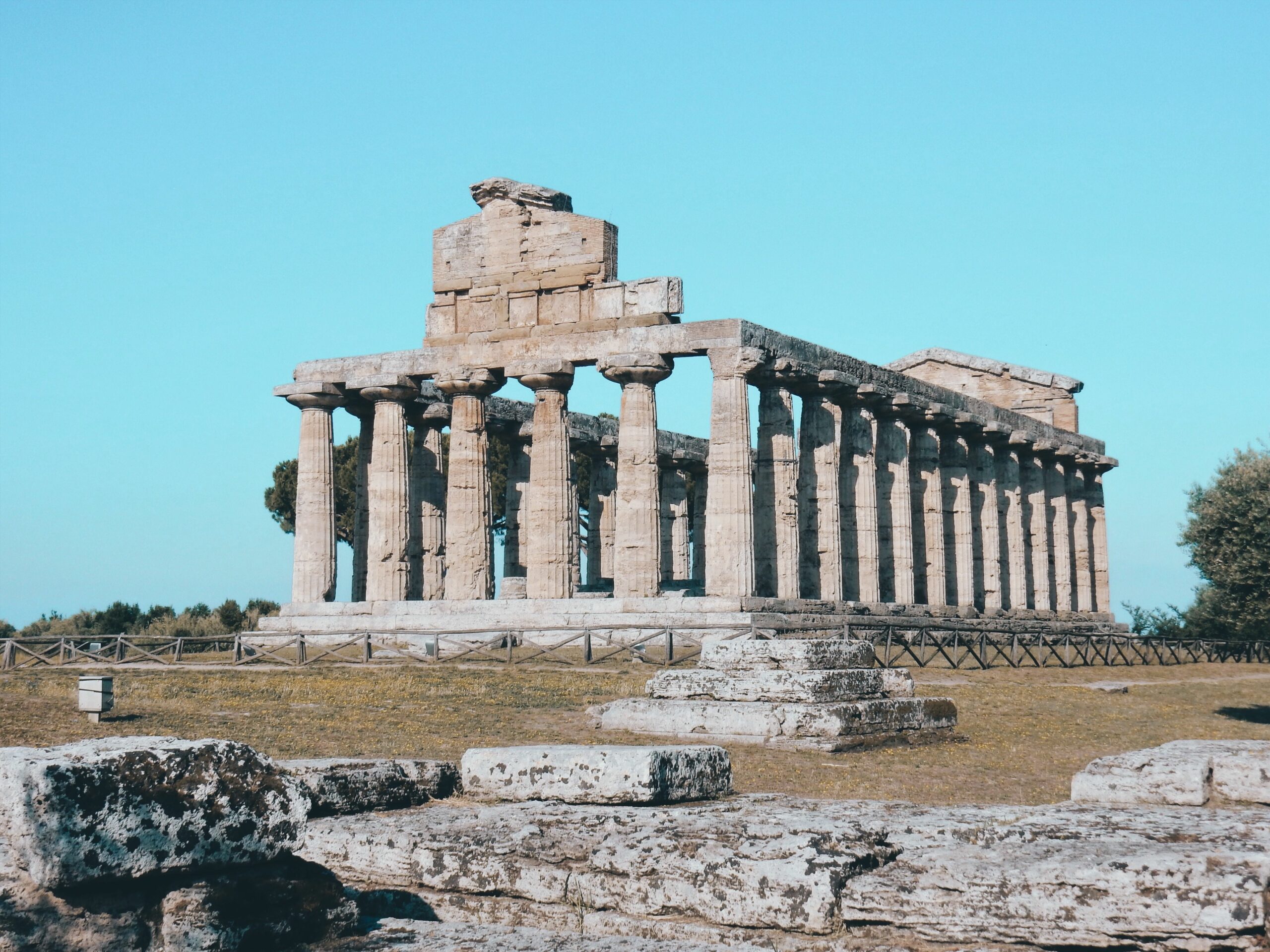UNESCO and sustainability go hand in hand. The humanist organization, founded in 1946, identifies and protects culturally relevant locations across the world. While everyone is familiar with the Pyramids of Giza and the Taj Mahal, hundreds of other UNESCO sites are worthy of a visit, too.
It’s notable that a country as small as Italy validates 55 UNESCO World Heritage Sites. The Campania region in Southern Italy is particularly significant. Grab a train ticket and spend a few days safely exploring the ancient highlights of the region, from Paestum to the ruins of Herculaneum to the splendors of the Royal Palace in Caserta. With the fall fast approaching, you may have many of these sites to yourself, which makes social distancing easier.
Naples & Herculaneum
Naples Historic Center is the perfect starting point. Explore streets permeating with the aroma of fried dough and orange blossoms. Discover more than 2,000 years of history, with old churches dating back to Paleochristian times adjacent to modern apartment blocks.


After spending part of the day in Naples, take a short train journey to Herculaneum, an open-air museum that was submerged under 80 feet of lava after Vesuvius erupted in 79 A.D. Excavations begun in the eighth century revealed a preserved ancient city, giving us a glimpse into what life was like during the Roman Empire.
Step into the bottega, a small shop that features clay wine amphoras on intact racks. Many ancient Romans slept above their shops and a bronze leg from the bed frame remains to this day. Nearby, you’ll find mosaic-filled homes that once housed patrician residents.




Last stop: Collegio degli Augustali, a religious building that showcases frescoes of winged chariots and Hercules, who, legend has it, founded the city.
Paestum
After a short train ride from Herculaneum, we reach Paestum in the Magna Graecia region. Stroll through the Archaeological Park as you inhale the scent of the Tyrrhenian Sea, which lingers even through the thick blanket of pine forest around you.

Gaze in wonder at the three Greek temples—dedicated to Poseidon, Hera and Ceres—that feature travertine columns, which change color based on the position of the sun, lighting up with delicate shades of pink at sunset.
Head to the Archaeological Museum to examine vases, funerary furnishings and the Tomb of the Diver, which features five painted slabs, one of a man who seems to be diving into the sea of eternity.


Padula Charterhouse
Your third day starts with a two-hour train ride to Padula Charterhouse, the largest monastery in Italy. The Charterhouse’s golden age was in the seventh century, establishing it as a Baroque masterwork. The church contains stuccos and a central altar with a sophisticated mother of pearl inlay.
After you enter, cross a courtyard and you’re in the very spot where monks performed their daily duties. What remains of the laundry, barns and stables surround you. The highlight of the complex is the stone kitchen. Judging by the size of the fireplace, one can only imagine the rich banquets that took place here.

Credit: Shutterstock


In contrast, the great cloister, just beyond the kitchen, is spartan in style. It’s the largest cloister of its kind in the world, with diminutive windows and cells dedicated to prayer.
As you end your visit to the charterhouse, regard the Helicoidal Staircase, a spiral, architectural marvel made of 38 stone steps, leading to the lobby of the library.
Royal Palace of Caserta
Your final day takes you back to Naples by train but there is one more important stop along the way: the Royal Palace of Caserta. Commissioned in 1752 by King Charles III of Naples and designed by architect Luigi Vanvitelli, the castle features 1,200 rooms including chapels, theaters and expansive salons.

Take the grand staircase past the two marble lions and enter the upper floors. Here you will find the opulent queen’s bathroom. Featuring elaborate Venetian mirrors—which allowed Queen Maria Carolina to watch her courtiers—the intimate space was for the queen alone.
The grandiose alabaster tub is covered in copper. Blink and you might miss the first version of a bidet! At the time, only royal households had running water, thanks to the Caroline Aqueduct, which fed the palace gardens, from the fountains to the tanks and fish ponds. Take time to stroll through this area and watch water cascade through mythological sculptures, including a statue of Venus languidly bathing by the waters.
Heading home is easy from here, as the Bourbon rulers built a precursor to the current train station directly across from the palace, making it the perfect spot for us to say arrivederci to Campania and its heritage sites.




Hotels in Campania
Herculaneum
Hotel Herculaneum
Situated just 100 feet from the ruins, this hotel affords guests 24 neutral-toned rooms with ensuite bathrooms.
Paestum
Abaton
A cozy bed and breakfast that boasts rustic furnishings, colorful decor and free WiFi.
Padula
Ca’ del Conte
Guests can expect traditional rooms—many with views of the expansive gardens—with canopied beds.
